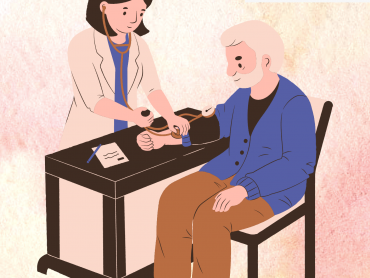“All work and no play makes Jack a dull boy…”
-English Proverb
By 2012, the Medical Council of India had realized that all work and no play was making their dear medicos, dull. This is the most likely reason why they decided to introduce sports in the medical curriculum in 2012. But from what medical students say, it seems like they just forgot to ‘tell them’ about this new addition. Because when I discussed this with my seniors they were completely clueless about this newly included subject. MCI cannot be blamed completely because after all the main aim of any government organization is to make rules without deciding how to implement them and well, they did a great job there!
The actual regulation stated that nearly 4% of the total teaching hours in the first two years of MBBS will be allotted to sports and extracurricular activities including yoga. Whether this was implemented in any college to date is quite a difficult question to answer.
Sports remained a part of medical students’ lifestyle through sports meets, fests and intercollege competitions until the new medical curriculum was introduced in 2019. This new curriculum proposed to make efficient and talented Indian medical graduates – doctors who not only lived by the book but also had an overall great personality and skills. As a result, a lot many things were added to the curriculum, including sports.
Now there are separate hours for sports, yoga, or meditation. It’s funny to know that if any medical student is asked about ‘When was sports introduced in the medical curriculum?’ they will answer 2019 because before that there was no implementation at all. This strict implementation made things a bit difficult and all thanks to the pandemic, resulted in situations where the 2019 batch was practising yoga and exercising in the auditoriums of college. This may seem unrealistic and ridiculous but, it’s true! I have been one of those students.
“The doctor of the future will give no medicine, but will involve the patient in the proper use of food, fresh air, and exercise.”
– Thomas Edison
The Sports Confusion in Medical Curriculum
The concept of recommending exercise for good health is very popular but the question of whether this implementation is really good for medicos stays. Most of the students seem confused about this new addition because our education, workload, and eventually, the entire profession doesn’t leave much scope for exercising or playing any sports daily. Many people pursue it as a hobby and take time out daily from their busy schedule to exercise but not everyone likes going that extra mile.
Sports come with a wide range of benefits – from stress relief to good health, from better sleep to increased confidence. But the problem is the way they were introduced to medical students. This has made them more sceptical towards it.
The attitude of most medicos towards sports in their medical curriculum has turned out to be negative. Ultimately, sports must become a part of one’s lifestyle through self-motivation and not because it has been imposed on them. So asking students to come early for these sessions or staying late after college seems wrong. In addition to this, most medical colleges don’t have a proper plan for implementing this. Some colleges have sports grounds but in poor, unusable conditions whereas others have sports grounds that are far from their campus. And a major issue with implementing sports in the medical curriculum is the lack of trainers and coaches. One must understand that medical students are not school students who can be convinced to participate in PT or running willfully. Disinterested students would get bored and surely find an escape.
Students tend to bunk lectures which are so important for them because they know that they can learn it on their own, then why wouldn’t they bunk these sessions? Also, exercising is something that they can do completely on their own. Also, the professors who are supposed to ensure that the students take sports seriously are usually those who have almost zero connection to sports and haven’t played anything or even exercised in a very long time. No Indian medical college can provide adequate space and trainers for each & every sport that students want to play. Ultimately, it’s pretty impossible to make these sports sessions engaging and effective for all.
Many colleges just end up introducing meditation sessions in the name of sports & yoga. Meditation helps them relieve stress, and have a clear head. It’s also easier to conduct in the closed walls of classrooms. But these sessions don’t have any significant physical benefit of sports. So the dilemma about this very noble addition remains.
What Then, is The Solution?
“Strategy is important, but execution is everything. Incredibly successful people focus on executing incredibly well.”
-Jeff Haden
What could have been the perfect implementation of such a regulation? Most students say it would have been way better if sports weren’t made mandatory for all. Others say that if these sports sessions were flexible, they might be more effective. Some say that it is a great decision only when the MCI is also bothered about maintaining the condition of sports grounds and in some cases, increase access to these areas.
Sports in medical colleges can be implemented at a fixed time when everyone can play a sport of their choice. Hopefully, this will not seem boring or a waste of time to students, and they would actively participate in sports purely for their benefit.
Finally, the decision of introducing sports in the medical curriculum was a great one but the only problem was, no one figured out the actual plan of implementation. And like various other regulations, this regulation has also been abandoned with a lot of loopholes. This is never going to be effective till the suggestions of students for whom this is implemented are taken into consideration.
We can conclude that the best way of implementing sports is ensuring that the condition of sports grounds is good and that sports sessions are structured and not imposed events.









